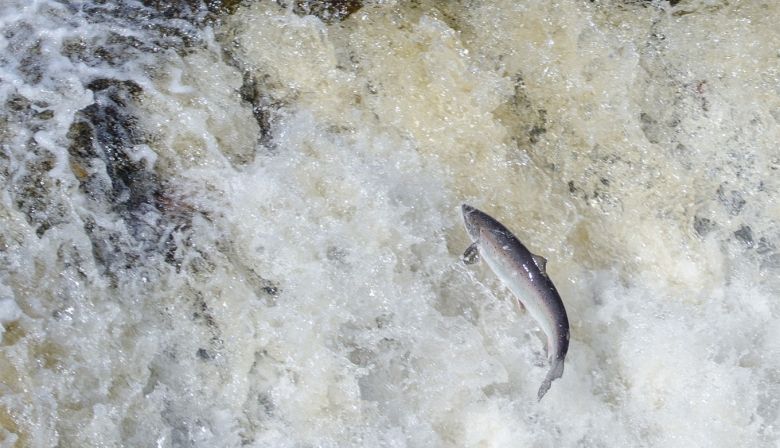A group that advocates for the conservation of Atlantic salmon in Newfoundland and Labrador says fish farming and aquaculture are playing a key role in the dramatic population drop in rivers on the south coast.
Steven Sutton, head of outreach and engagement of the Atlantic Salmon Federation, says the group was disappointed — but not surprised — by the latest federal data on salmon numbers in south coast areas like Conne River, which saw fewer than 200 fish return to the river in 2020.
While the group expected stocks to go down, said Sutton, they believe the data suggests aquaculture is having a significant impact on the population.
“We’ve got some big problems on the south coast of Newfoundland in particular, particularly in the area of aquaculture,” Sutton told CBC News Tuesday.
“It’s certainly not the only thing that impacts wild salmon on the south coast or right across Newfoundland, but it is the one thing that distinguishes that south coast population from the rest of the province. And that we believe is the reason why those populations are doing so poorly down there.”
Sutton said the extent of the impact of aquaculture on populations on the south coast hasn’t been sufficiently investigated in the province. But research done in Europe, he says, suggests sea lice have been known to affect salmon in areas where aquaculture is taking place.
He said fish farming could also have an impact in areas like Conne River, where fish that are interbred might not be able to prosper in the province’s river conditions.
“What we do know from DFO’s own research is that there’s been extensive interbreeding between wild salmon and escaped farm salmon on the south coast. And we think that’s having a major impact on the production of those rivers as well,” Sutton said.
“When you interbreed them with those farmed fish, you get those farmed fish genetics in the population. Then of course the fish are no longer as well adapted to the environment.”
Mark Lane, executive director of the Newfoundland Aquaculture Industry Association, told CBC News on Wednesday that Atlantic salmon stocks have been in decline for decades in jurisdictions around the world, long before aquaculture existed and also in places where the industry doesn’t operate.
“Rivers, even in Labrador where aquaculture isn’t within a 2,000- or 3,000-kilometre radius, are endangered or threatened,” Lane said.
Lane blamed industrialization, habitat loss and over-fishing as known contributors to salmon deaths, and noted that the Fish, Food & Allied Workers’ union and other groups recognize seals as a predatory issue for salmon, along with cod and crab.
Closing rivers not the solution: Sutton
While Sutton says the Department of Fisheries and Oceans is considering designating the entire south coast salmon population as threatened under the Species at Risk Act, the Atlantic Salmon Federation doesn’t see that as the right approach.
“The problem with listing under the species at risk act is that it will immediately close all recreational fisheries down there, and all First Nations fisheries if there were any left,” he said.
“One of the things that salmon have going for them that many other species don’t is that in Newfoundland they have tens of thousands of people who care about them.… And so when the species are in trouble, the last thing you want to do is disconnect those people who care and who are willing to fight for them from them.”
